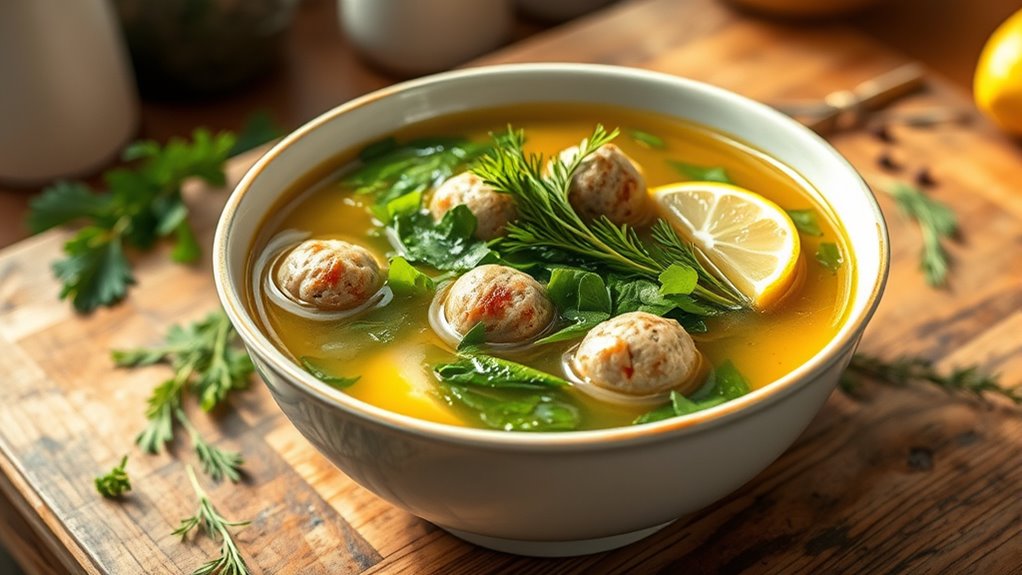Simmer tender meatballs of ground chicken or lamb with fine breadcrumbs, eggs, grated onion, and fresh dill and parsley for a gentle, aromatic bite. Poach them in a clear lemony broth, then fold in orzo or rice and more herbs for brightness. Season with salt, pepper, and a splash of lemon to finish, keeping the broth light and comforting. This timeless Greek wedding soup invites you to savor warmth, tradition, and a whispered promise of more to come.
Ingredients and Quantity
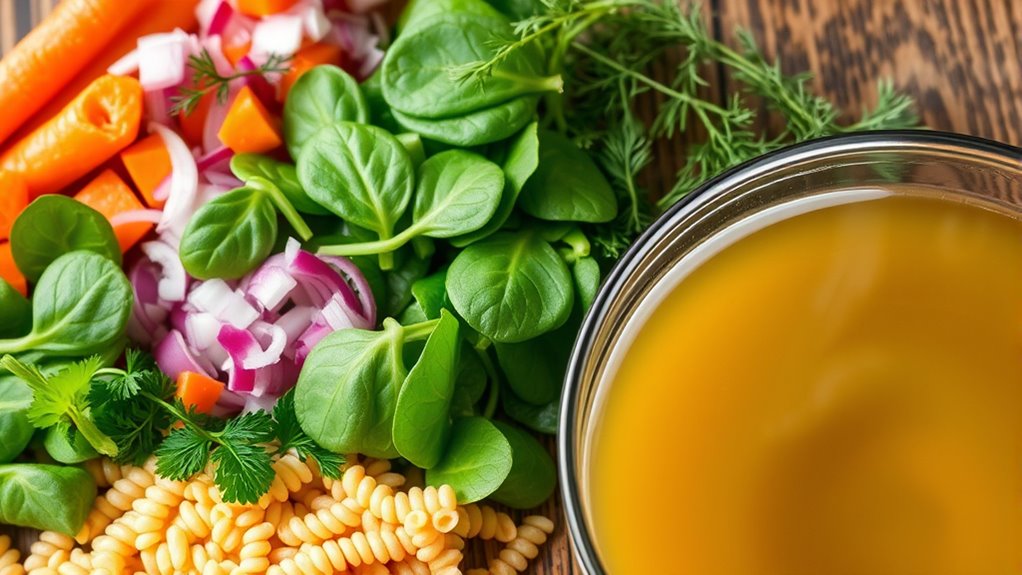
For the Greek wedding soup, gather the essentials: two pounds ground chicken or lamb, one cup fine breadcrumbs, two eggs, a half cup grated onion, a teaspoon salt, half a teaspoon black pepper, and a tablespoon each of chopped fresh dill and parsley.
You’ll taste Greek flavors in these quantities, a base for soup variations you can trust. You’ll shape the meat with care, then set it aside to rest while you prepare the rest of the pot. Precision matters, yet freedom guides your hands, letting tradition meet personal touch. The table below echoes that balance, inviting you to explore.
| Item | Amount | Purpose |
|---|---|---|
| Ground meat | 2 lb | Core flavor |
| Breadcrumbs | 1 cup | Binding |
| Eggs | 2 | Structure |
Preparations
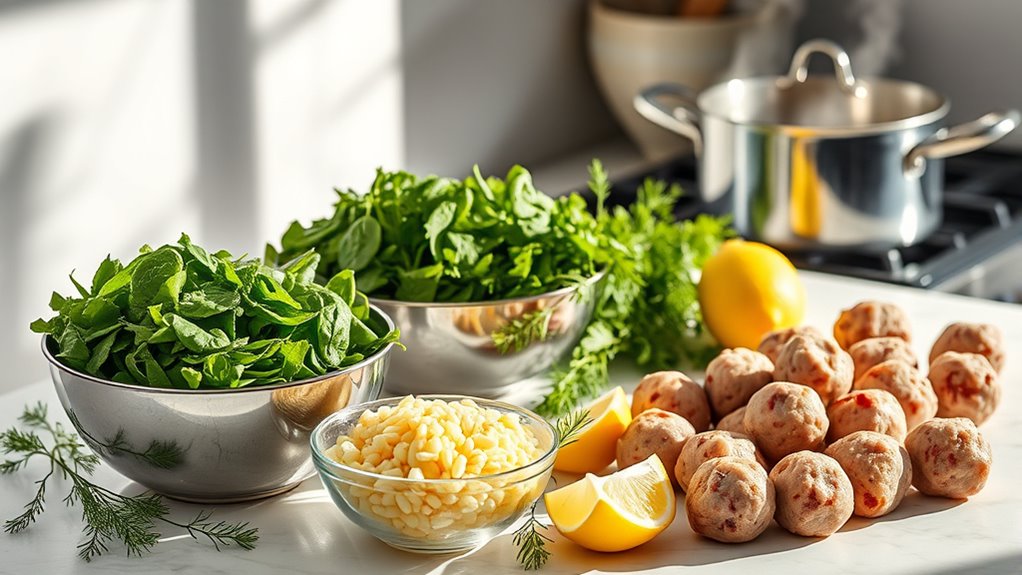
To prep the meat mixture, combine the ground chicken or lamb with the breadcrumbs, eggs, grated onion, salt, pepper, dill, and parsley, then mix just until everything is evenly distributed. You’ll shape small, uniform balls that hold together without cracking, ensuring even cooking. Chill briefly to firm the texture, aiding cohesion when simmered. In a pot, heat stock or broth, then gently slide the meatballs in, letting them poach slowly to preserve tenderness. For the soup base, add orzo or rice, then herbs like oregano or mint to taste, allowing flavors to meld. You’ll savor soup variations that emerge from careful balance, while subtle flavor enhancements—lemon zest, a splash of olive oil, or dairy optional—lift the finish without overpowering tradition.
Kitchen tools or Kitchenware Required
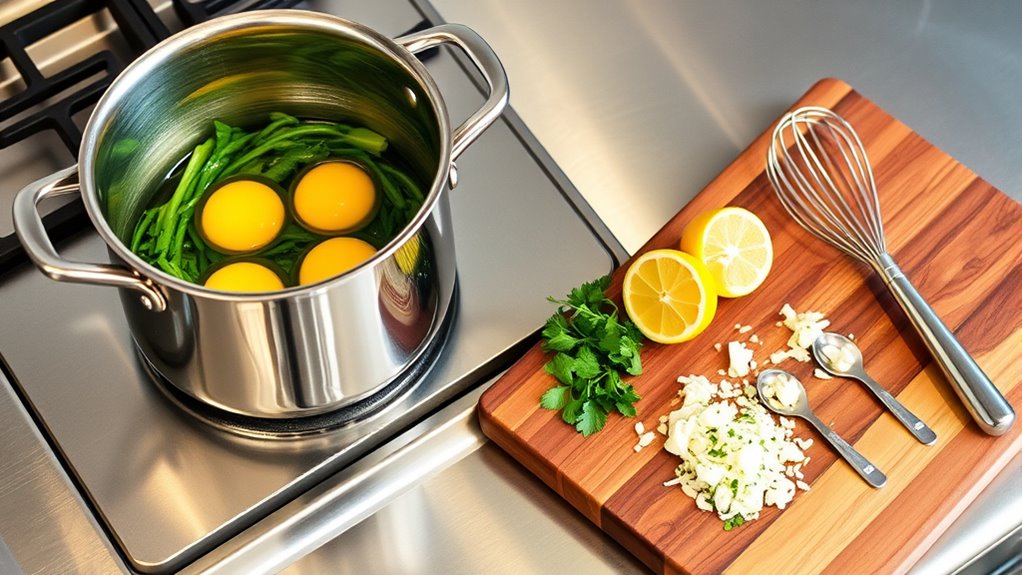
A sturdy pot, a slotted spoon, and a smallice-free ladle are your core allies for Greek Wedding Soup, complementing a cutting board, sharp knife, and mixing bowls for the meat mixture. You’ll also want measuring cups, a whisk, and a sieve to respect texture and rhythm in every step. Kitchen essentials here mean reliable heat, steady grip, and clean lines of motion, not excess. Cooking gadgets should serve precision: a thermometer for broth, a grater for aromatics, and tongs for gentle handling.
| Tool | Purpose |
|---|---|
| Pot | Braise, simmer, and marry ingredients |
| Ladle | Scoop and portion with grace |
How to Cook
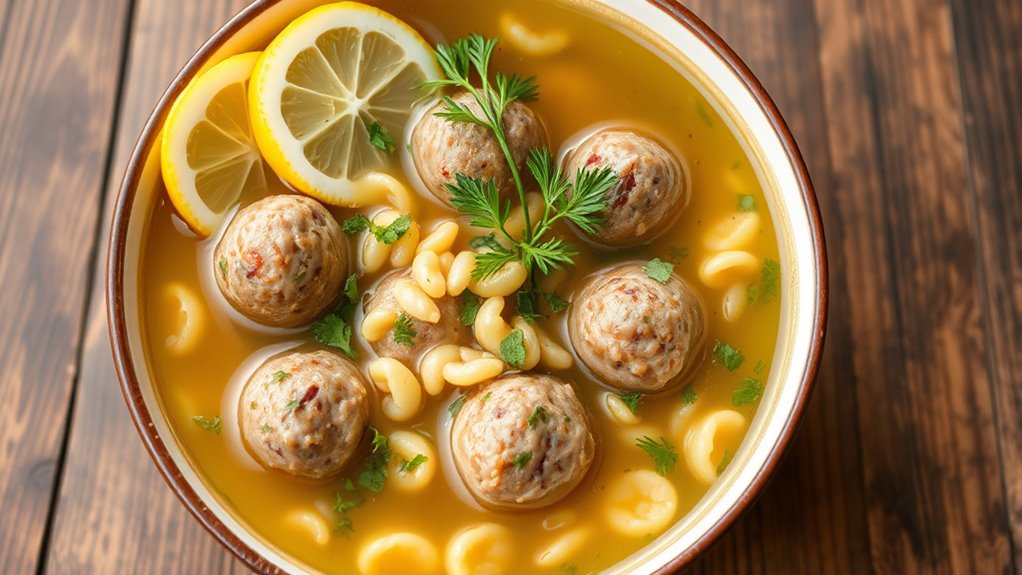
- Begin by preparing the meat mixture carefully to ensure a tender texture.
- Form the mixture into meatballs with a balanced density.
- Gently drop the meatballs into a simmering broth infused with herbs.
- Season the broth with salt, pepper, and a hint of lemon to enhance the flavors.
- Gradually add rice or orzo to the broth to complement the texture and aroma.
- Layer flavor profiles by incorporating onion, garlic, dill, and mint.
- Simmer the mixture gently, allowing the flavors to meld and the broth to become clear and bright.
- Taste and adjust the seasoning as needed using precise cooking techniques.
- Continue simmering until the dish achieves a harmonious unity true to tradition.
How to Serve
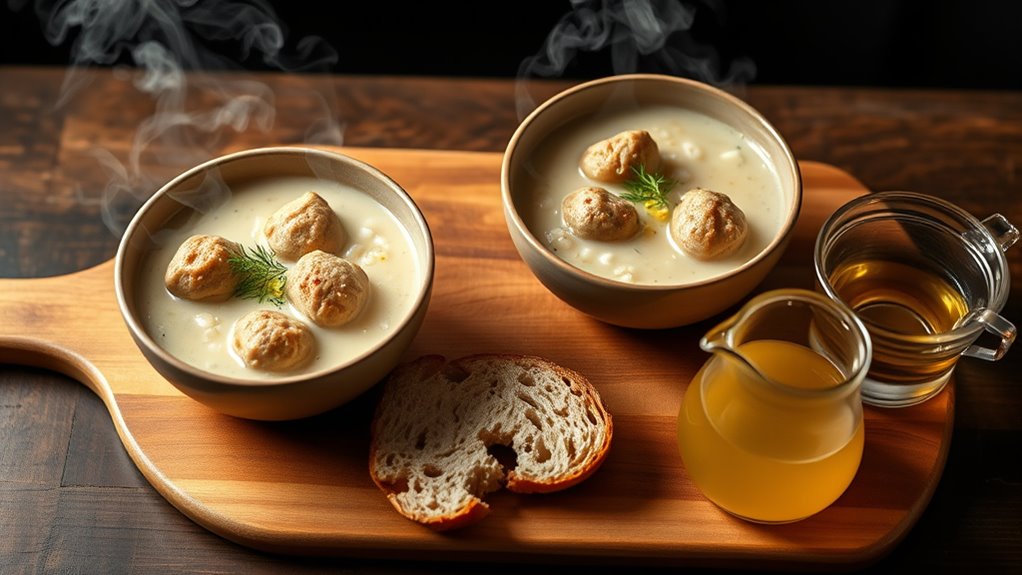
When you’re ready to serve, ladle the clear broth with the meatballs and rice into warm bowls so the steam carries the aroma of lemon and dill. You’ll present the soup with a calm, deliberate cadence, letting the colors—pale broth, tender meatballs, flecks of rice—speak for themselves. For serving suggestions, group two meatballs per bowl and finish with a light dusting of dill and a whisper of lemon zest. Consider Presentation ideas that emphasize hospitality: place bowls on a wooden board, with a small pitcher of extra broth and a crusty bread slice on the side. Serve promptly, inviting guests to taste and discuss, honoring tradition while embracing personal flair and freedom of flavor.
Tips
To prep a Greek wedding soup with confidence, keep your broth clear and bright by skimming impurities as it simmers and finishing with a gentle squeeze of lemon for brightness. In Tips, you’ll refine technique with steady hands and measured timing, because precision elevates tradition. Trust cooking techniques that honor the stock’s clarity, then layer flavors through careful seasoning—salt, pepper, and a pinch of oregano—without overpowering the lemon’s glow. When a recipe calls for ground meat, adjust fattiness by choosing lean or mix-grams that suit your comfort zone, maintaining a supple, meatball integrity. For ingredient substitutions, explore lamb or turkey for delicate twists, or swap orzo with rice for texture variety. Your freedom shines in confident, purposeful substitutions that respect classically balanced broth.
Food Value and Benefit
Greek wedding soup offers substantial nutritional value and multiple health benefits. This flavorful dish combines lean chicken, fresh herbs, and leafy greens, providing a balanced source of protein, vitamins, and minerals without feeling heavy. The warm broth promotes hydration and comfort, making it an ideal choice for sustained energy and overall wellness.
Benefits of eating Greek wedding soup include:
- Steady protein intake from lean chicken supports muscle maintenance and repair.
- Rich in vitamins A and C from herbs and greens, enhancing immune function and skin health.
- Provides minerals such as iron and calcium, essential for blood health and bone strength.
- Contains fiber for improved digestion and gut health.
- Garlic and citrus zest contribute antioxidants and immune-boosting properties.
- Hydrating broth helps reduce fatigue and promotes mindful eating.
- Comforting dumplings add texture and support social and cultural food rituals.
- Supports balanced energy release, preventing blood sugar spikes.
This recipe is a nourishing, wholesome meal that promotes health, vitality, and a cherished culinary tradition you can enjoy confidently in your kitchen.
Frequently Asked Questions
Can I Freeze Greek Wedding Soup With Meatballs Already Formed?
Yes, you can freeze Greek wedding soup with meatballs formed. For best results, consider Freezing tips: freeze meatballs separately first, then combine later; beware meatball texture may tighten. Label portions, and thaw gently to preserve flavor and texture.
What’s the Best Meat-To-Broth Ratio for Authenticity?
You’ll want a balanced 1:4 to 1:5 meat-to-broth ratio for authenticity, you’ll savor meat choices that suit texture, and you’ll taste broth depth like a well-tuned chorus, free to improvise your own traditional, precise rustic comfort.
Can I Substitute Dill With Oregano or Mint?
Yes, you can substitute dill with oregano or mint. This changes the flavor profile, offering herbal brightness or fresh cool notes. Explore herb alternatives carefully, balancing salt and lemon to preserve tradition while embracing your own flavor freedom.
How Long Can Leftovers Safely Be Stored in the Fridge?
Leftovers safely keep in the fridge for about 3 to 4 days. For best food safety, cool promptly, store airtight, reheat to steaming, and smell/check before consuming. Trust your senses; proper leftover storage honors your freedom.
Is There a Vegan Version of This Soup?
Yes, you can. You’ll simmer vegan meatballs in a plant based broth, creating a bright, comforting bowl that honors tradition while embracing freedom, texture, and flavor in every spoonful.
